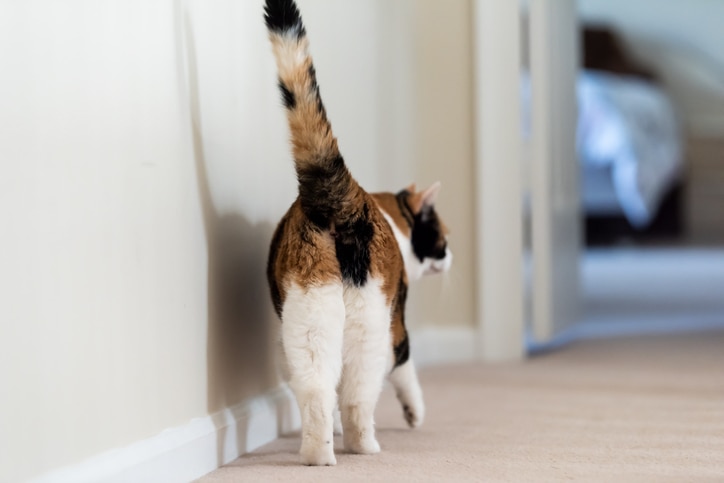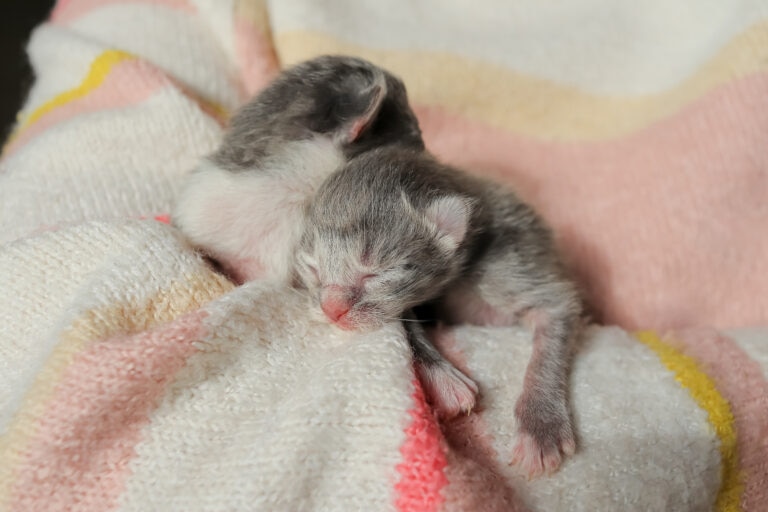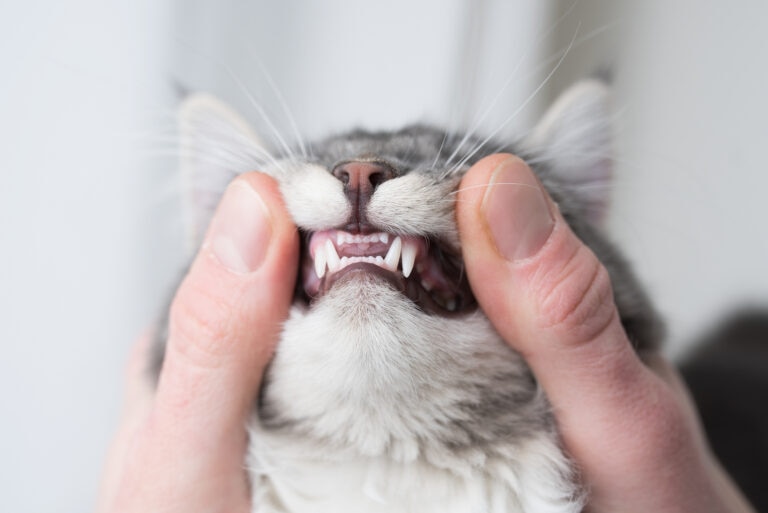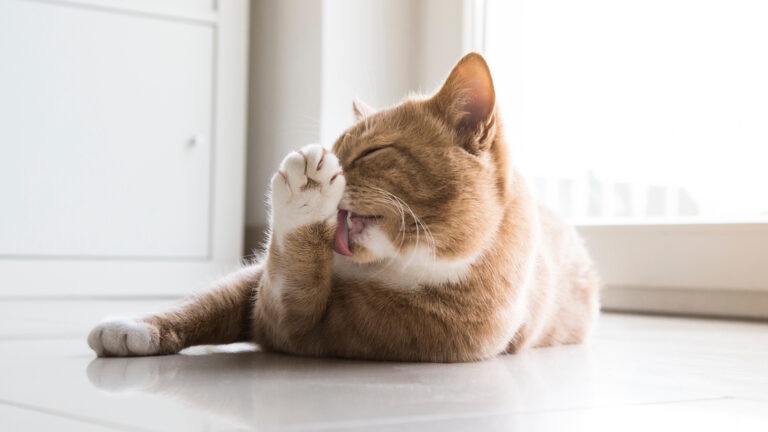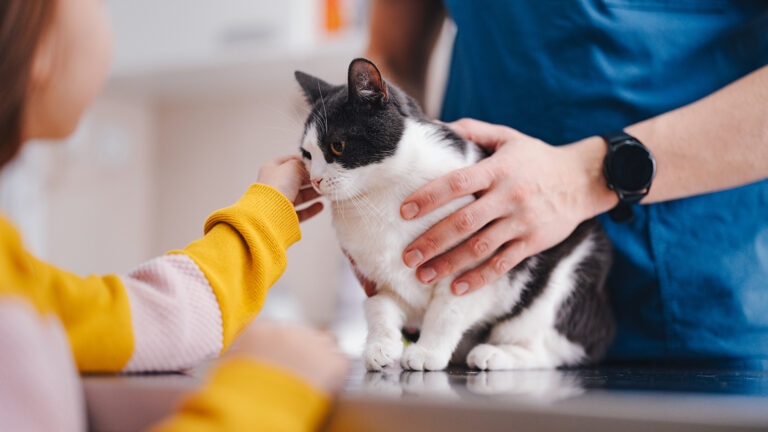5 Signs You Need To Take Your Sick Cat to the Vet
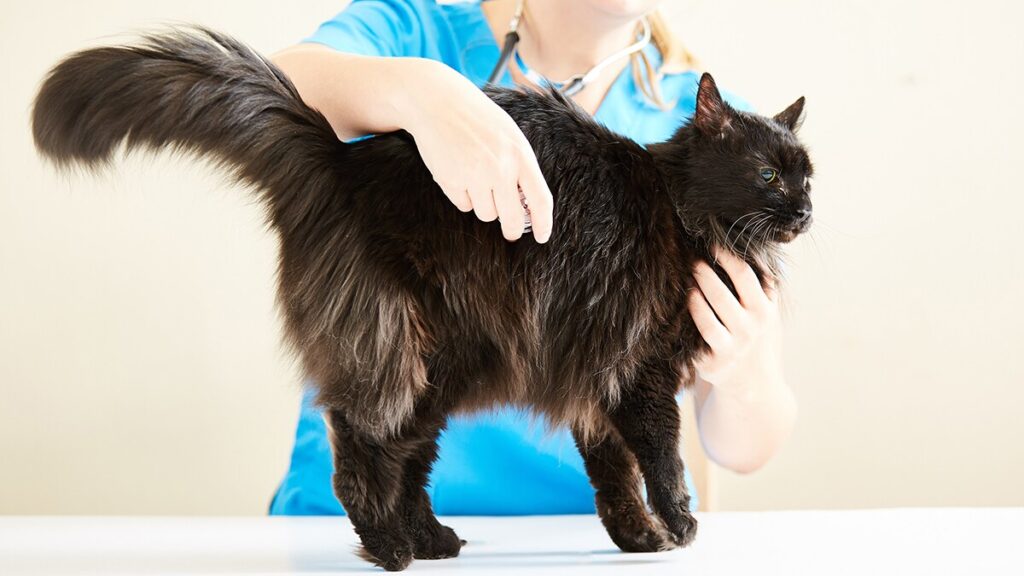
Photo by Chewy
It’s all too easy to overlook the signs that your cat might not be feeling their best—they’re masters at disguising sick cat symptoms. This goes back to their wildcat roots, when they needed to appear to be healthy and uninjured to survive. After studying feline DNA, researchers at the Washington University School of Medicine in St. Louis, MO found that today’s housecats are not nearly as domesticated as dogs. “When your dog is sick, he’ll typically make it obvious that something is wrong, but your cats— still genetically wild animals—are different. They’re still hardwired to hide their illnesses and injuries,” says Dr. Michel A. Selmer, DVM, CTCVMP, and owner of Advanced Animal Care Center in Huntington Station, NY. “This makes their regular health checkups even more important.“
So, how do you know when your cat is having a problem that requires a veterinarian’s attention? In general, “It’s important to remember that cats are creatures of habit, so any change in behavior is worth watching,” advises Dr. Selmer. That being said, Dr. Selmer points to these five sick cat symptoms that warrant a call to your veterinarian.
5 Sick Cat Symptoms
1. Lying in a Different Place Than Normal
A common sign that a cat is sick is slinking off to hide in places she doesn’t usually frequent. Be aware of what’s normal for your cat. A feline who can always be found snoozing on the recliner suddenly opting for the closet floor may be ill.
2. Different Eating or Drinking Habits
If your cat is not eating her cat food, take note. Cats who aren’t feeling well often don’t have much of an appetite. With some diseases, though—kidney disease or diabetes, most notably—increased thirst comes along with it. So if you are filling your cat’s water bowl more frequently, it is most likely time to make an appointment with your veterinarian.
3. Changes in Litter Box Use
Going back and forth to the litter box, but producing only small amounts of urine, if any, could be a sign of a urinary tract infection or a blockage. Being unable to urinate is potentially fatal, so if you notice this behavior, especially if you hear your cat crying or straining while using the litter box, reach out to your vet right away.
4. Using a Chair To Jump Onto the Table, Versus Jumping Straight From the Floor
If your cat is hesitating to go up or down stairs or sleeping on the floor, instead of jumping up onto the bed to snuggle up with you like usual, then you should contact your veterinarian. Any unwillingness or ability to move also warrants a call to your veterinarian because it could signify a painful injury.
5. A Noticeable Drop in Activity Level
Only you know what’s typical for your cat. If your cat seems lethargic and not nearly as active as usual, then they could be having a medical issue. Many diseases and conditions in cats can show up as a drop in their energy level. In a similar way to people, a sick cat is usually a tired cat.
If you’ve made a vet appointment for your sick cat to visit a veterinarian, you will need to be extra caring when transporting them. “Cats tend to dislike everything about a trip to the vet’s office. They hate being caged. They hate the ride, and they hate the harried and loud environment when they arrive,” says Dr. Selmer. “Finding a veterinarian that offers a more Zen environment helps.”
If you suspect your cat is injured, it is best to not attempt to maneuver them into a carrier. If your cat does not enjoy being put into a carrier, or can’t because they are sick, try the Frisco top-loading kennel. It has a door in the front and another door on the top of the carrier to make it easier to get your cat inside. Another option is to carefully wrap your cat in a blanket like the American Kennel Club Micro Sherpa Pet Blanket to carry them to the veterinarian’s office. Contact your veterinarian beforehand to gauge the waiting time so you can come prepared.
During your appointment, you will need to discuss all of the sick cat symptoms and changes in behavior that you’ve witnessed at home. As Dr. Selmer explained, “You are the veterinarian’s eyes and ears at home.” You should inform your vet of anything you noticed, like that your cat is not eating, or that you heard your cat crying or whatever the unusual behavior may be. Your veterinarian will then perform a physical exam and any diagnostic tests that are required. Once they have identified the issue, they will work with you to get your cat back on their feet and feeling their best.




